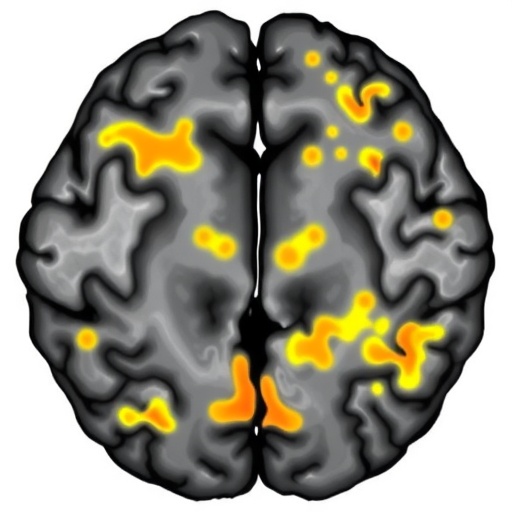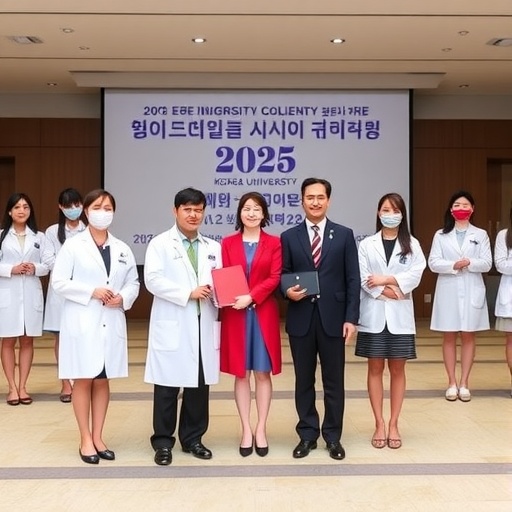In an exciting breakthrough in neuroimaging research, a team of scientists has unveiled distinct spatiotemporal patterns governing the progression of white matter hyperintensities (WMHs) in the human brain. These findings promise to deepen our understanding of age-related neurological changes and potentially transform diagnostic and therapeutic approaches for various brain disorders, including vascular dementia and Alzheimer’s disease. Published recently in Nature Communications, this landmark study elucidates the complex trajectory of white matter changes, offering an unprecedented window into how these lesions evolve over time and space within the brain.
White matter hyperintensities are lesions that appear as bright spots on certain MRI sequences, notably fluid-attenuated inversion recovery (FLAIR) images. While they are commonly detected in older adults, their clinical impact ranges widely, from incidental findings to being strongly associated with cognitive decline, stroke, and other cerebral pathologies. Until now, research had mostly characterized WMHs in a static manner, focusing on their volume or overall burden at a single time point, but little was known about their dynamic spatiotemporal progression. This new study from Chung, Park, Ryu, and colleagues addresses this gap by harnessing advanced longitudinal imaging techniques combined with sophisticated computational models to track the evolution of WMHs with unprecedented granularity.
The researchers analyzed large-scale longitudinal MRI data spanning multiple years from a diverse cohort of aging individuals. Employing cutting-edge segmentation algorithms, they precisely delineated WMH regions at successive time intervals. Crucially, they did not just quantify overall lesion volume but mapped changes across distinct white matter tracts and cerebral regions. This allowed the team to detect specific patterns in how WMHs emerged, expanded, and interacted with surrounding brain tissue over time. These spatiotemporal trajectories revealed that WMHs do not grow in a uniform or random manner; rather, they follow regionally distinct patterns that may reflect underlying pathophysiological mechanisms unique to various brain areas.
A central finding of the study is that the progression of WMHs exhibits distinct phases that vary across brain regions. Early in the disease course, certain periventricular regions—adjacent to the brain’s fluid-filled ventricles—showed rapid lesion expansion, whereas deep white matter areas exhibited more gradual changes. Intriguingly, posterior regions of the brain had markedly different progression timelines compared to frontal regions, suggesting a region-specific vulnerability or differing disease drivers. The study’s fine-scaled temporal resolution illuminated these differences, which could not be appreciated with single-timepoint imaging snapshots.
The team also identified that spatiotemporal progression patterns were significantly associated with vascular risk factors, such as hypertension and diabetes, as well as markers of small vessel disease seen in other imaging modalities. This implies that WMHs likely result from complex interactions between vascular dysfunction and neurodegenerative processes, rather than isolated insults. The differential regional susceptibility to WMH progression might thus be influenced by variations in vascular supply, blood-brain barrier integrity, or local metabolic demands—a hypothesis that now deserves further mechanistic inquiry.
Advanced machine learning techniques played a pivotal role in uncovering these patterns. By training algorithms on longitudinal imaging datasets, the researchers developed models capable of predicting future WMH growth trajectories in individual patients. These predictive models have the potential to be integrated into clinical workflows, enabling neurologists and radiologists to forecast lesion evolution and intervene proactively. For example, patients exhibiting early rapid WMH expansion in key brain regions might benefit from intensified vascular risk management or experimental therapeutics aimed at preserving white matter integrity.
Moreover, this study challenges the existing paradigm that treats WMHs as a monolithic entity. Instead, it posits that WMHs represent a heterogeneous collection of pathologies with distinct spatiotemporal dynamics that relate differently to clinical outcomes. This holds enormous implications for clinical trials, as treatments might need to be tailored based on the lesion distribution patterns and individual patient trajectories rather than simply targeting global WMH load.
Neuroscientists and clinicians alike are excited by the potential for these spatiotemporal insights to unravel the complex interplay between aging, vascular health, and neurodegeneration. By understanding where and when white matter is most vulnerable, future interventions could be precision-guided to protect critical networks that support cognition and motor function. The deep longitudinal approach also opens a new frontier for biomarker development, offering dynamic rather than static indicators of disease progression.
The significance of this work extends beyond cognitive impairment and dementia, as WMHs are also implicated in mood disorders, gait abnormalities, and stroke recovery. The detailed mapping of lesion progression could elucidate differential susceptibilities across neurological conditions and help tailor rehabilitation protocols. Additionally, it underscores the invaluable contribution of longitudinal neuroimaging cohorts empowered by evolving computational tools, setting a new standard for brain aging research.
Importantly, the study authors advocate for expanded longitudinal imaging efforts encompassing more diverse populations. Because WMH burden and progression can be influenced by genetic factors, lifestyle, and comorbidities, broader datasets will be critical to validate and refine predictive models. Also, harmonizing imaging protocols and data sharing platforms will accelerate translation of these insights into widespread clinical use.
In conclusion, this transformative study heralds a new era in understanding white matter hyperintensities beyond static volumetric assessments. By capturing the distinct spatiotemporal patterns of lesion progression, researchers have charted a detailed atlas of white matter vulnerability and resilience during aging. As these findings permeate clinical practice and research, they promise to fuel innovative approaches in diagnostics, prognostics, and therapeutics aiming to combat brain aging and its devastating sequelae.
Looking forward, integrating multimodal neuroimaging, genetic profiles, and fluid biomarkers with the presented spatiotemporal WMH frameworks may unlock even deeper mechanistic insights. The eventual goal is to design personalized medicine strategies where interventions are precisely timed and targeted based on a patient’s unique lesion progression pattern. This effort reflects the cutting edge of neuroscience—one that embraces complexity and leverages technology to decode the intricate narrative of brain health over time.
This work also exemplifies how collaboration across disciplines—neurology, radiology, bioinformatics, and machine learning—can yield breakthroughs that neither could achieve alone. It underscores the importance of investing in longitudinal cohort studies and pioneering analytics infrastructure, which together act as a launchpad for discoveries that will define the next generation of brain health research.
Given the increasing global burden of age-related cognitive and motor decline, this research arrives at a critical juncture. Its implications ripple through public health, clinical practice, and fundamental neuroscience, offering new hope for delaying or preventing debilitating brain disorders. The granular, dynamic portrait of WMHs detailed by Chung and colleagues will undoubtedly become a cornerstone reference, guiding future studies and innovations aimed at preserving white matter integrity throughout the lifespan.
As scientists continue to explore the pathways and consequences of white matter hyperintensity progression, this pioneering study serves as a reminder of the brain’s remarkable complexity—and the profound benefits of technological and conceptual advances in unravelling it. It is a tour de force in neuroimaging research and a significant step toward a future where brain aging can be better understood, managed, and ultimately mitigated.
Subject of Research: The spatiotemporal progression patterns of white matter hyperintensities in the human brain and their implications for aging and neurological diseases.
Article Title: Distinct spatiotemporal patterns of white matter hyperintensity progression.
Article References:
Chung, J., Park, G., Ryu, WS. et al. Distinct spatiotemporal patterns of white matter hyperintensity progression. Nat Commun 16, 9360 (2025). https://doi.org/10.1038/s41467-025-64704-4
Image Credits: AI Generated
Tags: age-related neurological changescognitive decline and brain healthcomputational models in neuroimagingdynamic progression of WMHslongitudinal imaging techniques in neuroscienceMRI sequences for brain analysisNature Communications study findingsneuroimaging research advancementsspatiotemporal patterns of white matter hyperintensitiestherapeutic approaches for brain disordersvascular dementia and Alzheimer’s diseasewhite matter lesions evolution





